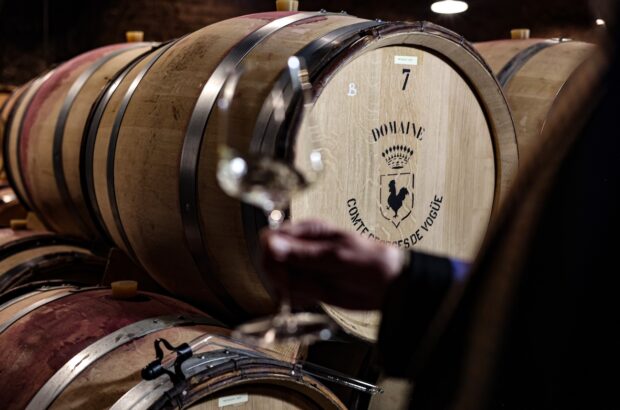As I write, the Languedoc summer is quietly tilting towards autumn.
The nights are cooler than they were; midday is less glaring. The dusk skies are shockingly colourful: an inky blue up on the pine-wooded hill to the east, while most of the void above darkens to magenta, livid as a fresh bruise. The grapes in the vineyards up the road have ripeness in their sights now, as others do all over France. Soon another 47 million hectolitres of wine will be looking for a home. Looking, looking, and looking…
The prices tell their own story. The shelves of our village Intermarché are full of wines (well-known ACs included) at less than #5 (£4.09) a bottle; if you buy the cheapest plastic casks of local rosé, you needn’t spend more than #1.40 (£1.15) a litre. There’s a narrative to some of the buildings, too, lounging gloomily on the edge of almost every village, their concrete walls dusty and unkempt, assembled in a way which might have looked purposeful in 1938 but that now begs for demolition: these are old wine cooperatives. We have two. One opens briefly every Saturday morning; the other one is shut forever. Forget grand cru posturing and superstar consultants: this is the real drama of French wine.
Half of France’s wine production comes from cooperatives, and that includes 40% of all AC wine. The 800 or so cooperatives that remain open (and many have now grouped together for survival) have almost 87,000 members. They are unevenly distributed around the country, though. Only 11% of Loire production comes from cooperatives, whereas here in Languedoc-Roussillon it is 71%. The figures are even higher in the Rhône départements of Drôme (82%) and Ardèche (76%). According to Denis Verdier, president of the Confédération des Coopératives Vinicoles de France, the fundamental problem faced by every one of those 87,000 wine growers is that ‘in spite of the last three low-production years, the market prices we get are still below production cost.’
I’d worked that out already. I bought a bottle of 2009 red Bergerac at #2.77 (£2.27) the other day; the 2007 Madiran I have been drinking regularly costs #3.86 (£3.16) a bottle. I found a 2009 Morgon for #5.46 (£4.47) – and that’s one of the most sought-after Beaujolais crus, hand-harvested, and from a fine vintage. These are all cooperative blends and must, it seems to me, be profitless exercises in vat-emptying.
In the world context, they’re not bad, but they have three main problems. Cleanliness is one (too much brett); handling is another (they have rough edges and lack fruit purity); the third is bottle variation.
But their fundamental balance, their texture, fruit presence and drinkability are impressive, potentially much better than many slickly marketed, technically correct wines from irrigated, hot-climate southern-hemisphere vineyards on the UK market at £10 or so.
In skilled French, Australian or Californian hands, those raw materials would make superb wine. Removing their faults would add another £3 or £4 to the price, but they would still represent good value – if they could find buyers.
A few years ago, the talk was all of creating pan-French brands to compete with the New World’s poster wines. Much optimism surrounded the 2005 launch of Chamarré, a range of wines designed for export sourced all over France from eight different cooperatives (including Val d’Orbieu in Languedoc, Alliance Loire and Producta in Bordeaux). Some of the wines were very good: I remember an excellent sweet Jurançon sourced from the Cave de Jurançon, another of the partners. Chamarré, alas, went into receivership in May this year.
Perhaps branding isn’t the answer, although it was addressing the right question: the ferocious (though necessary) complications of French wine. A more recent Languedoc-Roussillon solution has been to leave all those necessary complications on the label, but badge everything with the much simpler Sud de France banner. Consumers then have an option: buy the complications if you’re interested; buy Sud de France if you aren’t. It may help.
One thing is certain, though. France’s existing cooperative members own many of the nation’s good – and a few of its great – vineyards. Yet the lack of coop profitability means these are in danger of disappearing altogether, sucked down by the low-price, low-investment cycle. French coops (like New World wine giants) are punchbags for large supermarket groups. With current overstocks, they cannot help but remain so.
Those vineyards, though, are too good to lose. It’s a problem of much more consequence for France than who made the best wine in Pauillac in 2009.
Written by Andrew Jefford







